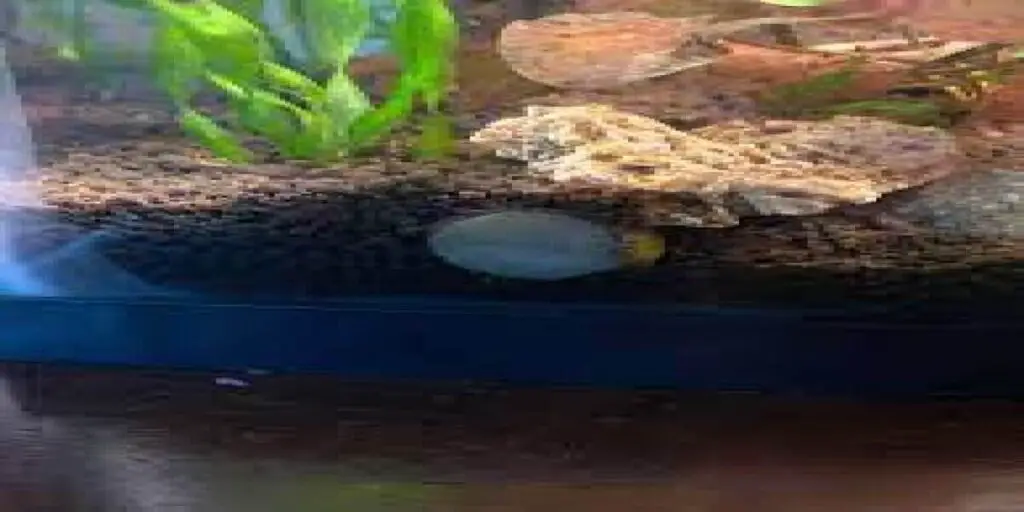
Nerite snails are popular freshwater aquarium snails known for their small size, attractive shell, and algae-eating habits. An interesting aspect of snail behavior is their burrowing tendencies. In this article, we will examine whether nerite snails burrow, the reasons behind their burrowing behavior, and how this affects their interaction with the aquarium environment.
Burrowing Behavior of Nerite Snails
Nerite snails are not known to be burrowers like some other snail species. Unlike burrowing snails that actively burrow into the substrate, nerite snails generally prefer to crawl on hard surfaces such as rocks, driftwood, or glass.
Their strong muscular feet allow them to firmly attach to surfaces and move around easily while grazing on algae or biofilm.
Using crevices and hiding places
Although nerite snails do not burrow into the substrate, they can find crevices or hiding places inside the aquarium.
They may hide themselves among rocks, in decorative gaps, or under plants. These hiding places give them a sense of security and protection from potential threats. Nerite snails may retreat to these areas during times of stress or when they are seeking shelter.
Adhesion to Smooth Surfaces
Nerite snails have a unique adaptation that allows them to bond tightly to smooth surfaces such as glass or acrylic.
They use their muscular feet to create a suction-like grip, which prevents them from being dislodged by water currents or other obstacles.
This attachment behavior enables them to walk along glass surfaces and feed on algae, while also serving as a way to avoid potential predators.
Role in Algae Control
One of the main reasons aquarists keep nerite snails is their exceptional ability to utilize algae. These snails are very efficient grazers and can help keep the aquarium clean of unsightly algae growth.
Although they don’t burrow, their constant movement along surfaces allows them to clean algae from a variety of areas, including glass, rocks, and decorations.
Do nerite snails hide under the substrate
Nerite snails are not known to hide under substrate in aquariums. Unlike some other snail species that burrow into the substrate, nerite snails prefer to crawl on hard surfaces such as rocks, driftwood, or glass. They generally do not burrow into the substrate for hiding purposes.
Why is my snail crawling
If you see your snail squished, it is likely not a Nerite snail but a different species of snail. Some snails, such as the Malaysian trumpet snail or the Ramshorn snail, are known for their subdued behavior.
Snails may burrow into the substrate for a variety of reasons, including searching for food sources, laying eggs, or seeking shelter. Brooding behavior may be a natural instinct for certain snail species.
Do nerite snails hide
Although Nerite snails cannot burrow into the substrate, they do find hiding places inside the aquarium. These hiding places can include cracks between rocks, gaps in decor, or even under plants.
Nerite snails retreat to these hiding places when they feel stressed or when they need shelter. Providing adequate hiding places can help them feel safe and contribute to their overall well-being.
Do snails burrow into rocks
Some species of snails, such as freshwater snails or sea snails, can burrow into rocks. Penetrating rocks may be a way for snails to find shelter, protect themselves from predators, or gain access to algae or biofilm on rock surfaces.
However, it is important to note that not all snail species exhibit this behavior. Snail suppression trends can vary depending on the species and their natural habitat.
You May Also Like:
- Why Do My Snails Go To The Top Of The Tank
- Does Flourish Kill Snails
- Will Hot Water Kill Aquarium Snails
Conclusion
Nerite snails do not exhibit the typical behavior seen in some other snail species. Instead, they prefer to crawl over hard surfaces and brace themselves firmly using their muscular feet. Although they may find crevices or hiding places within the aquarium for shelter and protection, they do not actively dig into the substrate. Their adhesion to smooth surfaces, such as glass, enables them to move around the aquarium, grazing on algae and contributing to effective algae control.
